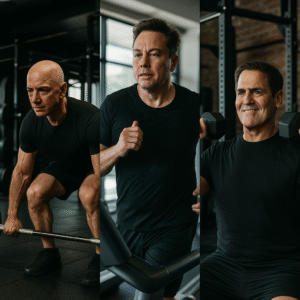In today’s fast-paced world, where schedules are often packed to the brim and stress levels run hig, Finding moments of calm and clarity can seem like a distant dream. Yet, amidst the hustle and bustle, there lies a powerful tool that not only promotes physical well-being. But also nurtures mental resilience: mindfulness. In this exploration, we delve into the profound intersection of mindfulness and fitness instruction. Uncovering the transformative impact it can have on our bodies and minds. From enhancing exercise performance to fostering a deeper connection with oneself. The practice of mindfulness holds the potential to revolutionize the way we approach fitness training. Join us as we embark on a journey to understand how cultivating mindfulness can not only sculpt our bodies, but also cultivate a sense of balance and harmony in our lives. Whether you’re a seasoned fitness enthusiast or just beginning your wellness journey. Prepare to be inspired to integrate mindfulness into your fitness routine like never before.
Mindful Movement: How Practicing Awareness Enhances Fitness Instruction
In the fast-paced world of fitness, where intense workouts and high-energy routines often dominate the landscape. The concept of mindfulness might seem like an unlikely companion. Yet, as we’ll explore in this article, cultivating awareness through mindful movement can profoundly enhance the effectiveness of fitness instruction. Beyond simply going through the motions. Incorporating mindfulness techniques can deepen the mind-body connection, optimize performance, and promote holistic well-being for both instructors and clients alike.
 Understanding Mindful Movement
Understanding Mindful Movement
Before diving into its application in fitness instruction, let’s grasp what mindful movement entails. At its core, mindful movement involves paying deliberate attention to the present moment. Cultivating awareness of bodily sensations, thoughts, and emotions as we engage in physical activity. This heightened state of awareness not only enhances the quality of movement, but also fosters a deeper connection between mind and body.
Enhancing Exercise Efficacy
One of the primary benefits of integrating mindfulness into fitness instruction is its ability to enhance exercise efficacy. By bringing focused attention to each movement, clients can optimize their form, engage the target muscles more effectively, and minimize the risk of injury. Whether performing strength training exercises or mastering yoga poses. Mindfulness ensures that every rep and every posture is performed with intention and precision.
Promoting Presence and Engagement
In a world filled with distractions, cultivating presence is a valuable skill in fitness instruction. Mindful movement encourages both instructors and clients to be fully present in the moment, tuning out external distractions and honing their focus on the task at hand. This heightened presence not only enhances the quality of instruction, but also fosters deeper engagement and connection between instructors and clients.
Managing Stress and Enhancing Well-being
Beyond its physical benefits, mindful movement offers profound mental and emotional benefits. Engaging in physical activity with mindful awareness can help alleviate stress, reduce anxiety, and promote overall well-being. By tuning into the sensations of the body and observing the fluctuations of the mind without judgment. Individuals can cultivate greater resilience and emotional balance in the face of life’s challenges.
Fostering Mind-Body Connection
Mindful movement serves as a bridge between the mind and body, fostering a deeper connection between the two. As individuals become more attuned to the sensations of their bodies during exercise. They develop a greater appreciation for their physical capabilities and limitations. This heightened awareness not only enhances performance but also promotes a sense of self-empowerment and self-mastery.
The Power of Presence: Why Mindfulness Matters in Fitness Instruction
In the bustling world of fitness instruction, where routines are often fast-paced and demands are high. The concept of presence might seem like a luxury. However, as we’ll explore in this article, cultivating mindfulness and presence is not just a luxury but a necessity for effective and impactful fitness instruction. By embracing mindfulness techniques, instructors can elevate their teaching, deepen their connections with clients, and foster a supportive environment.
Embracing the Present Moment
At the heart of mindfulness is the practice of embracing the present moment with open awareness and acceptance. In the context of fitness instruction, this means being fully engaged and attuned to the needs and experiences of both oneself and one’s clients. By cultivating a present-centered approach, instructors can create a supportive and empowering environment where clients feel seen, heard, and valued.
Enhancing Client Engagement
Mindfulness enhances client engagement by encouraging instructors to be fully present and attentive during sessions. When instructors are mindful, they can better understand their clients’ goals, preferences, and limitations. Allowing them to tailor their instruction accordingly. This level of attentiveness fosters trust and rapport between instructors and clients, leading to deeper connections and more meaningful interactions.
Creating a Safe Space for Exploration
Mindfulness creates a safe space for clients to explore and challenge themselves without fear of judgment. Instructors who practice mindfulness are better equipped to create a supportive and non-judgmental environment where clients feel comfortable pushing their boundaries. This atmosphere of acceptance and encouragement fosters personal growth and empowerment.
Improving Communication Skills
Mindfulness enhances communication skills by promoting active listening and empathetic understanding. Instructors who practice mindfulness are more attuned to verbal and non-verbal cues from their clients. Allowing them to provide personalized feedback and guidance. This clear and compassionate communication strengthens the instructor-client relationship.
Cultivating Emotional Resilience
Fitness instructioncan be emotionally demanding. Requiring instructors to navigate challenges such as client frustrations, setbacks, and self-doubt. Mindfulness cultivates emotional resilience by helping instructors develop self-awareness, emotional regulation, and stress management skills. This inner resilience enables instructors to remain calm, composed, and compassionate in the face of adversity, thereby providing a steady anchor for their clients.
Mindful Movement: Enhancing Flexibility and Mobility in Fitness Instruction
Welcome to a journey of mindful movement, where we explore how mindfulness can revolutionize flexibility and mobility in fitness instruction. In this article, we’ll delve into the transformative power of awareness and intentionality in improving range of motion and physical resilience.
- Mindful Awareness: By cultivating mindful awareness of body sensations and movement patterns, individuals can enhance their flexibility and mobility. Bringing attention to areas of tension and restriction allows for targeted stretching and mobilization, promoting greater freedom of movement.
- Intentional Breathwork: Incorporating intentional breathwork into fitness instruction can facilitate deeper stretches and enhance mobility. By synchronizing breath with movement, individuals can relax into stretches, release muscular tension, and expand their range of motion.
- Progressive Loading: Mindful movement emphasizes progressive loading and gradual adaptation to improve flexibility and mobility safely. By respecting the body’s limits and avoiding aggressive stretching. Individuals can prevent injury and build sustainable flexibility over time.
- Joint Stability:Mindfulness enhances joint stability by promoting proper alignment and proprioceptive awareness. By engaging stabilizing muscles and maintaining integrity in movement, individuals can support their joints and reduce the risk of injury during stretching and mobility exercises.
Conclusion
Results Transformation Center (Sparks) embodies the dynamic fusion of innovative tools and technologies in fitness instruction. By leveraging cutting-edge resources, they not only enhance the effectiveness of their training programs but also ensure a personalized and engaging experience for their clients. Through the incorporation of state-of-the-art equipment and digital platforms, they redefine traditional fitness regimes, fostering a culture of continuous improvement and sustainable health outcomes. Results Transformation Center (Sparks) stands as a beacon of innovation in the fitness industry, inspiring individuals to embrace progress and achieve transformative results in their fitness journeys.








